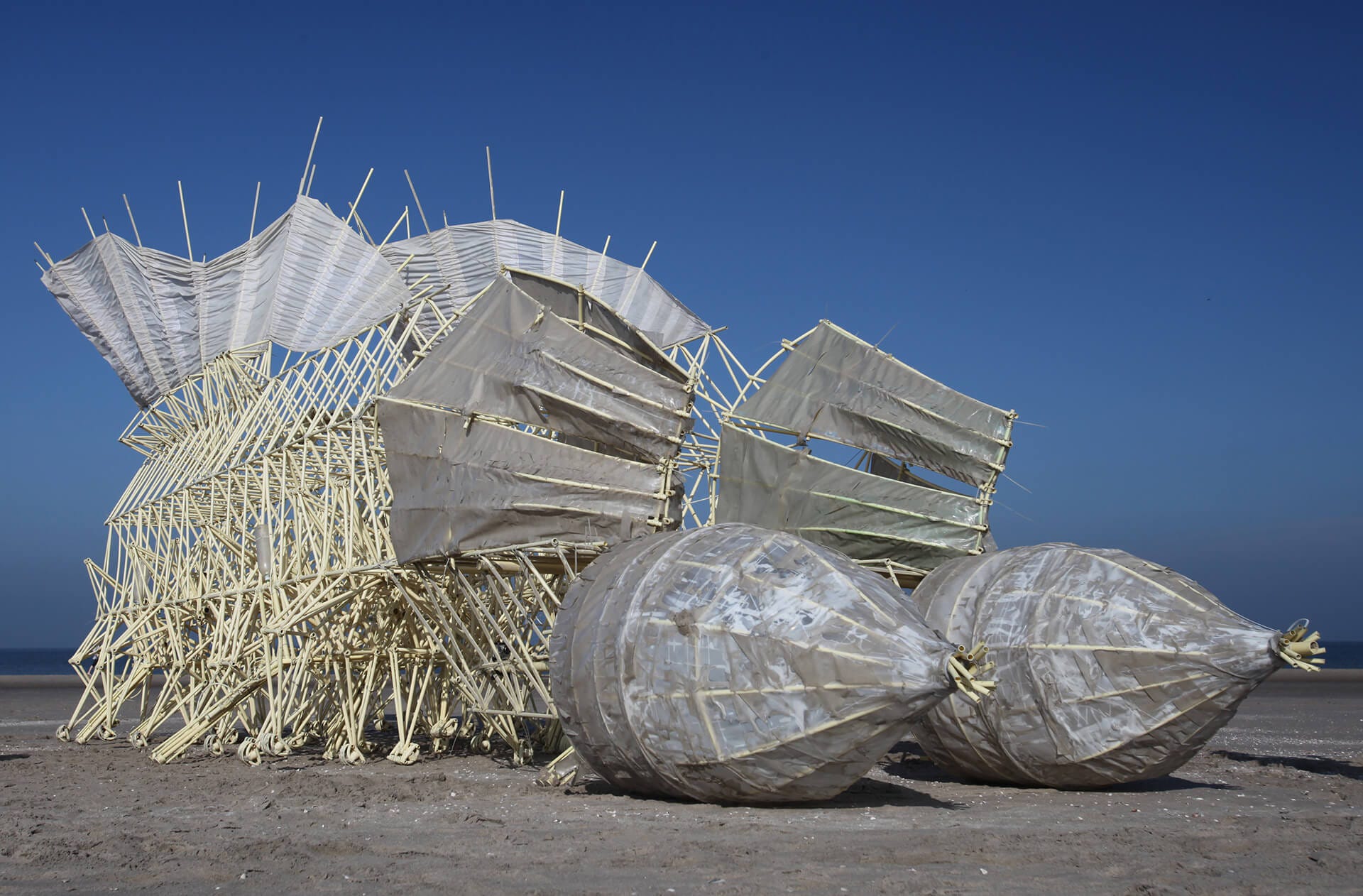Wind in motion
Sometimes it helps to look at a word from a different angle. Chi or Qi – that mysterious term so often invoked in Qigong and Tai Chi – can, if you’re in a poetic mood, be translated quite simply as wind. A movement you cannot see, yet unmistakably feel. Something that can brush gently across you or gather enough force to move you. And Qigong, then, becomes the art of moving with that wind, both inside and out. A kind of wind-movement. Not a trendy reinvention, but something ancient and deeply familiar. As if the body remembers how it once knew to move.
But before we continue, let me take you to a different expression of wind-movement. Not the soft tide of breath drifting through the body, but something you might encounter on the beach. Something that walks, sways, breathes – without ever truly living. Or at least … that’s the question.
Theo Jansen and his Strandbeests
For more than thirty years, Dutch artist Theo Jansen has been building animals out of PVC pipes, rope, and plastic bottles. It may sound like a Saturday afternoon hobby project in a shed somewhere, but make no mistake: his creations—Strandbeests, or “beach animals” – walk across the sand, carried by the wind, as if they were alive.
They have canvas wings, joints that hinge like knees, and bodies shaped according to elegant mathematical ratios. Some can even store air to keep walking when the wind briefly dies down. The evolution of a lifeform that was never born … and yet moves, senses, and responds.
Jansen sees his Strandbeests as a new species. Not robots, not art objects meant only for admiration, but creatures capable of adaptation. Just as in real evolution, “species” that don’t work disappear, while the stronger ones continue into new generations.
A life of their own, in the wind
Jansen’s ultimate goal is both modest and magnificent: Strandbeests roaming the coastline independently, with the wind as their only companion. Creatures that sense danger – say, winds that are too strong – and anchor themselves. Creatures that shift sand to help protect dunes, without a single human hand involved.
Consider that for a moment: a human creates something … that eventually becomes part of nature itself. A kind of poetry written in PVC.
What does this have to do with Tai Chi or Qigong?
More than you might think.
Qigong and Tai Chi are not merely forms of movement. They are practices of inquiry. Ways of exploring and studying yourself. How does the body move on its own when I stop pushing? What happens when I feel the wind within myself again? How can I cooperate with something larger than my ideas about how things “should” be?
Here are a few words to taste:
movement
mechanics (yes, the body is both technique and art)
naturalness
exploration
practice
failure (welcome, please)
starting again
curiosity
passion
If you’ve ever watched a Strandbeest walk and thought, How is this even possible?, then you’ve already touched the sense of wonder we try to awaken in Tai Chi and Qigong. Not understanding everything. Not controlling everything. But feeling how everything can work together.
The wind. The body. The ground. The silence between them.
Want to experience it?
If reading this stirred something, then the text has done its job. It’s time to move.
Come join a trial class in Tai Chi or Qigong – not to “learn something,” but to rediscover something you didn’t know you had misplaced.
And finally, if you’d like to see how those Strandbeests evolve – step by step, with humor, missteps, and triumphs – be sure to watch Theo Jansen’s TED talk. It’s a story about evolution, about play, about the love of movement. And it’s beautiful.
If you found this article worth reading and (not yet) feel like getting a paid subscription, you can always treat me to a cappuccino!



